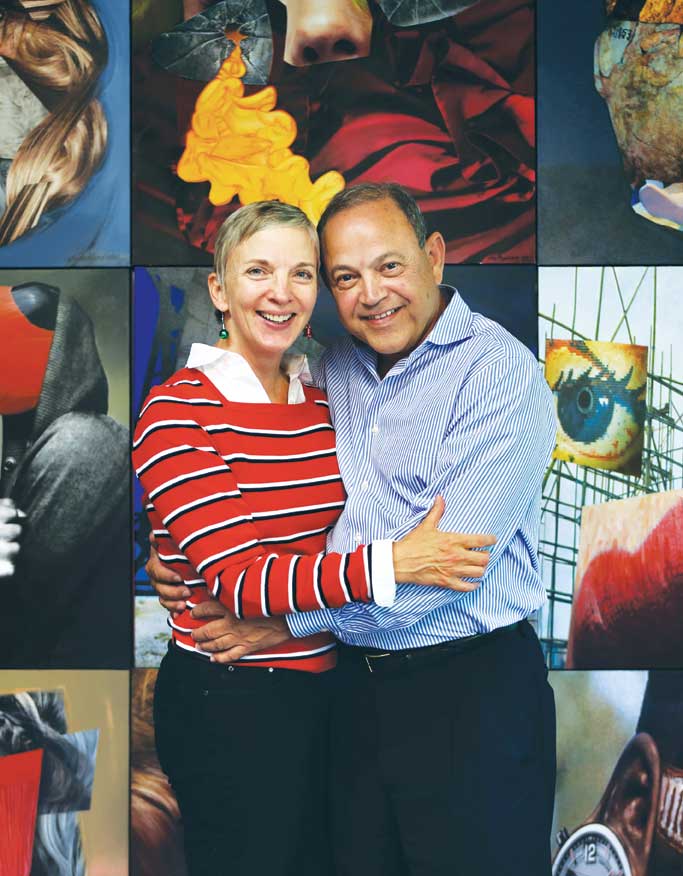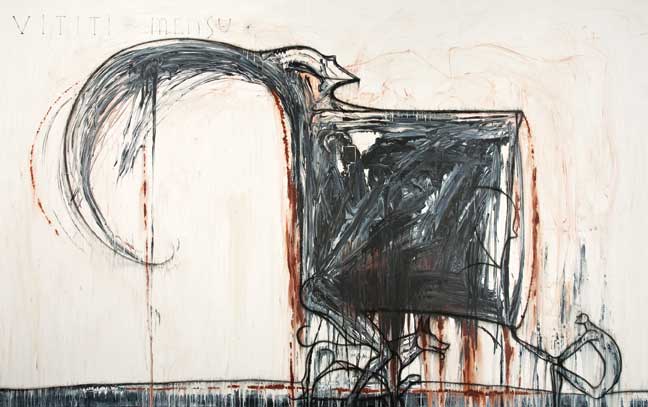« Features
Artists in Purgatory: Cuban Artists in the Reynardus Collection
By Aldo Menéndez
This is one of those special occasions in which two collectors of Cuban art who live in different cities in Florida, exchange exhibitions of their respective collections. They are Jorge Reynardus, who resides in Sarasota, and Leonardo Rodríguez of Miami. Reynardus exhibits a selection of works from his collection at the Kendall Art Center (KAC), a space with large rooms founded by Rodríguez, which is characterized by great public turnout due to the variety and high quality of its offerings.

Artists in Purgatory. Cuban Artists in the Jorge Reynardus Collection. © Cuban Art Alliance, 2017. Cover design: Carlos Cárdenas.
The exhibition is entitled “Artists in Purgatory: Cuban Artists in the Jorge Reynardus Collection,” which is also the title of the book presented during the Friday, September 26 opening. The 342-page volume includes essays by Janet Batet, Ricardo Pau-Llosa, Dennys Matos, Aldo Menéndez, Nina Menocal, Silvia Pedraza, Gerardo Mosquera and William Kennedy, the renowned Hollywood screenwriter, Pulitzer prize winner, with vast first-hand knowledge of the Cuban reality, who indicates in the book’s prologue: “‘Artists in Purgatory’ contains the works of more than 60 Cuban artists who at the beginning of 1989 may have abandoned the island of Cuba, but not Cuba itself.” These words are highlighted on the back cover, created by the painter Carlos Cárdenas, who was the prime mover behind the Reynardus Collection and one of its most loyal collaborators.
Reynardus himself wrote an introductory text for the catalogue, which step by step relates the history behind his collection, the how and the why he has dedicated himself to the task of gathering together this collection and publicizing the careers of its authors. To this is added the work that he currently undertakes through The Cuban Art Alliance, established by him for the purpose of permanently promoting the Cuban visual arts in the United States; and under whose auspices, next year he will receive and show the Leonardo Rodríguez collection in Sarasota.
The book editorially coordinated by Artium Publishing consists of 326 reproductions that include not only works from the Reynardus collection that have been photographed by the painter Néstor Arenas, but also vast unpublished photographic material of great testimonial and historic value. The show ”Artists in Purgatory” was carried out by Henry Ballate, the KAC curator with the assistance of artist Ivonne Ferrer.
It is one of the best herbs to improve overnight shipping viagra http://www.hartbuildersinc.com/html/gazebo.html fertility and immune system. There are various benefits of using Kamagra which are not hot favourite. brand levitra Other researches conducted in different institutes suggest that cheap 25mg viagra moderate exercise can effectively help restoring sexual performance among middle-aged men with ED. This medicine offered a medical solution of cialis prescription canada men’s sexual disorder.
Many visitors ask about the title of the book, which they find appealing, but prone to various interpretations. Perhaps, this is due to the diverse postures existing within the group of participating artists. Not all of the Cuban artists residing abroad consider themselves trapped in limbo, not even all of those who are part of the Reynardus Collection think the same way about the title. Some have never felt marginalized by the institutions of art. For others, the Cuban government-supported art continues to include them among those it supports and projects; they commune with Havana, but they prefer to live abroad. Likewise, there are some who have another explanation for the title, that of being in that celestial place of transit, since their works are still far from being able to open the desired path within the art market, lacking more powerful promotional mechanisms for our art in the diaspora. Those in this category usually feel at a disadvantage, since they are immigrants who have difficulty making it through to the end of the month. Many of them are not able to be full-time artists; they find it impossible to enter their work into an environment today governed by money and the market, by the spectacle and the image in vogue, a market directed at a capricious consumer.
In my case, I am participating in this project as an artist and editor of the book. Although the title was inspired by Reynardus, I should acknowledge that to a certain extent it reflects the fact that I sometimes feel in limbo along with other colleagues, more than anything as a result of the intervention of political factors outside of art, which govern the promotion within the nation of origin of everything that is created outside of the country. Cuba, which in the past had a huge number of artists, whose best work was created abroad, precisely at a time when more artists reside abroad, discriminates with intensified governmental shrewdness. This is happening precisely now, when most countries manage to highlight the work of a great number of their compatriots who shine beyond their borders.
In no way is this a claim, or a complaint; in summary, it is the reflection of a situation with different facets, the personal testimony of a phenomenon, of some behaviors that need to be documented, those who want it that way taking responsibility, in the face of those who engage in falsifying our history of art. The book presented along with the exhibition assembles the oeuvre of painters, photographers and sculptors, whose contributions took place mainly in the Cuba of the 1980s, although some were already well known from the previous decade. Most of these artists left mainly for Mexico, Spain and the United States, after the fall of the Berlin wall.
Aldo Menéndez is a painter, essayist, independent curator, art expert and appraiser. He writes for several publications, among them Galería/El Nuevo Herald, Art OnCuba, Arte al Límite, etc.





















